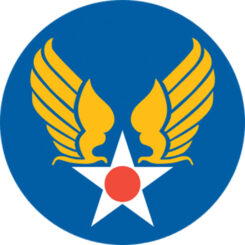Charles Runner
US Military Aviation was born with the creation of the US Army Balloon Corps in October 1861. Seven special balloons were constructed by a civilian group, and eight aeronauts were selected to fly them. Coke gas was initially used to inflate the balloons. With the construction of portable hydrogen generators, hydrogen was used on the battlefield. The Balloon Corps provided aerial reconnaissance at many major Civil War battles including Bull Run, Yorktown, Fair-Oaks, Vicksburg and the Peninsula Campaign. On clear days the aeronaut could see up to 50 miles from the balloon. The Balloon Corps operated the first aircraft carrier, George Washington Parke Curtis, a converted coal barge that was towed by a tug. It carried two balloons during its deployment in the Virginia Peninsula Campaign. The Balloon Corps was disbanded in August 1863.
The US Army Signal Corps Aeronautical Division, the first official US military aviation organization, was formed on August 1, 1907 and was comprised of 18 pilots and 31 planes. The Signal Corps Aviation Section replaced the Aeronautical Division on July 19, 1914 with 224 personnel and 23 aircraft and remained active until May 20, 1918. It was comprised of 1,218 personnel and 280 aircraft by late 1917. The US Army Air Service was a “temporary” military branch activated on May 24, 1918. It absorbed the Aviation Section and provided our military air force until July 2, 1926. During 1918 it was comprised of about 195,000 personnel and 7,900 aircraft. By 1926 it was down to about 10,000 personnel and 1,450 aircraft.
The US Army Air Corps replaced the Air Service on July 2, 1926 and remained active until March 9, 1942. In 1936 the Air Corps had 17,000 personnel and 855 aircraft. During WWII the numbers skyrocketed to 153,000 personnel and over 6,700 aircraft. The US Air Force was activated on September 18, 1947 by the National Security Act of 1947. It replaced, in name, the US Army Air Forces.
On that same day, the current Air National Guard was created by law as an Air Reserve Component of the Air Force. It currently has over 107,000 personnel. ANG units have participated in combat from the Korean and Cold Wars to the Gulf Wars. However, its lineage dates back to 1908 when members of the New York National Guard created a balloon unit. The 1st Aero Company of the NYNG responded to the Mexican Border Crisis in 1916 with aircraft. During WWI, ANG units were not mobilized, but many of their pilots made up the first group to serve on the European front. Following WWI, the 109th Observation Squadron of the Minnesota National Guard became the first of 29 NG aviation units to be recognized by the Federal Government. Captain Charles Lindbergh was a member of the Missouri NG 110th Observation Squadron when he completed his historic flight over the Atlantic. Many of the Observation Squadron pilots served during WWII.



